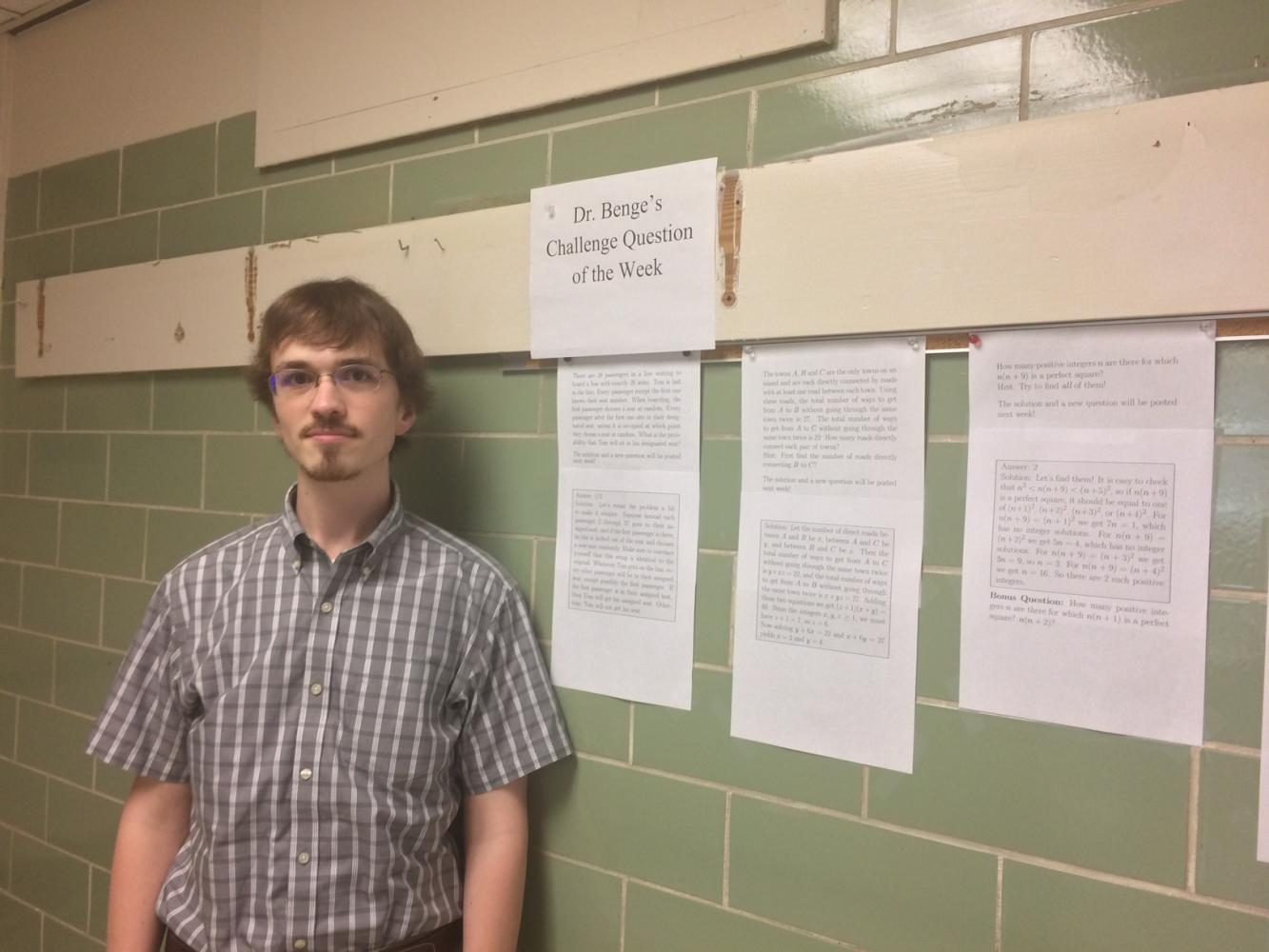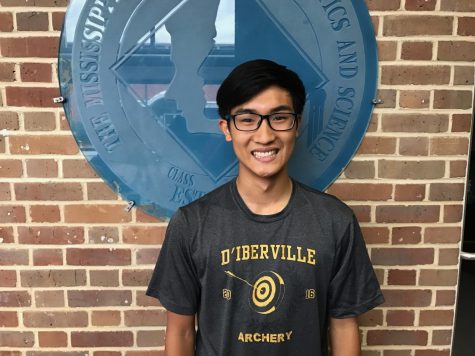Weekly Benge-Mathing Challenges and Entertains Students
Dr. Benge poses by his brainchild.
September 18, 2017
Today marks the seventh weekly edition of Dr. Benge’s Challenge Problem of the Week. Showcased outside of his classroom are several problems that have been regularly posted with still room for more – all with the intention of providing students with an interactive activity to collaborate with one another on a mathematical endeavor.
Dr. Benge, the newest mathematics faculty member who joined this school year, elaborated on his idea and inspiration his weekly problems.
“I put up the weekly math challenge questions to give students the opportunity to work challenging problems and to encourage them to stop by my classroom to ask about these questions and be exposed to more mathematics which may not make sense. I always encourage students to come by and talk about math to which they may not have been previously exposed.”
The problems are a compilation of Dr. Benge’s extensive experience in the field of mathematics.
“I write the questions myself, but a lot of them are motivated by things I have been inspired by in the past, competitions I have seen in the past, and tests I have written in the past.”
Examples of some of the types of problem include a combination of logic and game theory in last week’s edition and fundamental algebra featured in the week before.
Several dedicated students have consistently devoted time to solving the challenge problems of the week, two of whom are seniors William Johnson and Leah Pettit. Both have mentioned how much they have enjoyed spending small spurts of times between and on the way to classes thinking about the problems – rarely in solitude however.
Dr. Benge posts the problems with the hope of promoting discussion among the students.
“I hope the students are tackling these problems vary carefully. I want them to collaborate, talk to each other. It’s supposed to open up dialogue about mathematics. The math that is required to solve these problems are very simple. The trick is to use these skills to apply them. The math is not meant to be esoteric (not understood by a large number of people).”
As if complying with Dr. Benge’s wish, Johnson and Pettit mentioned that they often collaborated with each other and a few others on the weekly challenges.
A series of math problems is bound to produce a few memorable and humorous favorites. Johnson cites his as a graph theory problem from Week 2 that looks to count the number of possible routes from one town to another within a given network with certain restraints. Leah states her favorite was a logic puzzle from Week 4 which dealt with the distribution of gold coins among a group of greedy pirates. Presumably for humor, one of the restraints in that particular problem stated, “They [the pirates] enjoy feeding their fellow pirates to the sharks.”
For the most part, the students seem to be satisfied with the weekly activity. There are relatively few changes the dedicated math-lovers would like to see. One change that Pettit commented on was a minor flaw in the consistency of the problems not being posted at the same time every week. Despite not personally checking for the new problem every Monday morning, Pettit still finds it slightly bothersome to not see the new post hanging up in a routine manner.
Aside from his Challenge Problem of the Week, Dr. Benge is looking to implement a couple of other activities and plans as ways to offer the student body more ways to be excited about the subject. One of his major ideas is a school-wide integration bee.
“My hope is to get a group to go to the LA-MS chapter meeting of the MAA (Mathematical Association of America) in Lafayette in the Spring.”
Another of his proposals is to offer an independent study course in linear algebra. Both Johnson and Pettit have stated their anticipation for taking on the rigorous class come spring semester.









